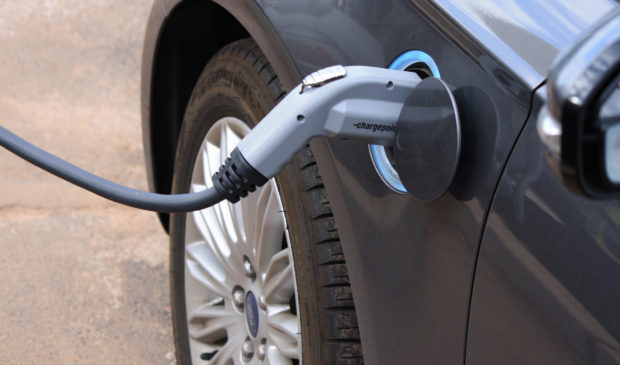Austin’s electric vehicle programming is revving up
Monday, June 25, 2018 by
Jessi Devenyns Thanks to the city’s goal to become carbon neutral by 2050 and Austin Energy’s commitment to adding 330 plug-in electric vehicles by 2020, Travis County recently passed Harris and Dallas counties and now has more electric vehicles than either. Now the question is, how do we incorporate our continually growing fleet – public and private – onto the grid?
ERCOT is predicting that by 2031, 20 percent of the vehicles on Texas roads will be electric. In Austin, this would translate to 320,000 vehicles producing $128 million a year in e-fuel revenue. It would also mean that these vehicles would make up 10 percent of the energy load on the city’s grid.
“We anticipate being able to build the capacity necessary to do it,” Dan Smith, Austin Energy’s vice president of electric service delivery, assured commissioners at the June 18 meeting of the Electric Utility Commission.
Already the electric utility is taking steps to increase infrastructure to accommodate the increase. Currently, 85 percent of all electric vehicle charging is done at home, so the city is incentivizing consumers to purchase faster-charging stations with a tiered rebate program based on the efficiency level of the charger they purchase. Similarly, Austin Energy is growing the number of public charging stations on public streets. Already it has 650 around town and Level 2 stations in the network grew 60 percent over the last year. Of particular interest are the DC Fast chargers that can fill a vehicle in 5-20 minutes but cost $150,000 each.
“I’m a little concerned how the business model works,” said Chair Cary Ferchill. “I think it’s a challenge to figure out how you spend that much money and even with the extra revenue (from more electric vehicles on the street) to break even.”
Kurt Stogdill, Green Building & Sustainability manager at Austin Energy, explained that it will require public-private partnerships to successfully implement this type of infrastructure, but first, the public must change the city charter to allow that to happen. Stogdill told the Austin Monitor, “There is language under Utility Service Regulations that says that customers may not re-meter or re-sell utility service. We will look to change that to allow electric vehicle charging.”
In the meantime, the city received a grant from the Texas Commission on Environmental Quality for $1.6 million to help install six DC Fast locations with four stations each. They will be located along the Interstate 35 corridor and augment the seven locations that are already in place around town. The intention is to allow electric vehicle drivers the ability to make longer trips as well as encourage high-use vehicles like semi-trucks, buses and ride-shares to continue to convert their fleets over to electric.
“So you can see why we’re so concerned about intelligent charging,” said Commissioner Dave Tuttle, who explained that with so much innovation and an infusion of electric vehicles expected within the next decade, planning is of the essence. “It’s a fun topic (but) it’s coming faster than I think we thought,” he said.
Photo by Noya Fields made available through a Creative Commons license.
The Austin Monitor’s work is made possible by donations from the community. Though our reporting covers donors from time to time, we are careful to keep business and editorial efforts separate while maintaining transparency. A complete list of donors is available here, and our code of ethics is explained here.
You're a community leader
And we’re honored you look to us for serious, in-depth news. You know a strong community needs local and dedicated watchdog reporting. We’re here for you and that won’t change. Now will you take the powerful next step and support our nonprofit news organization?



